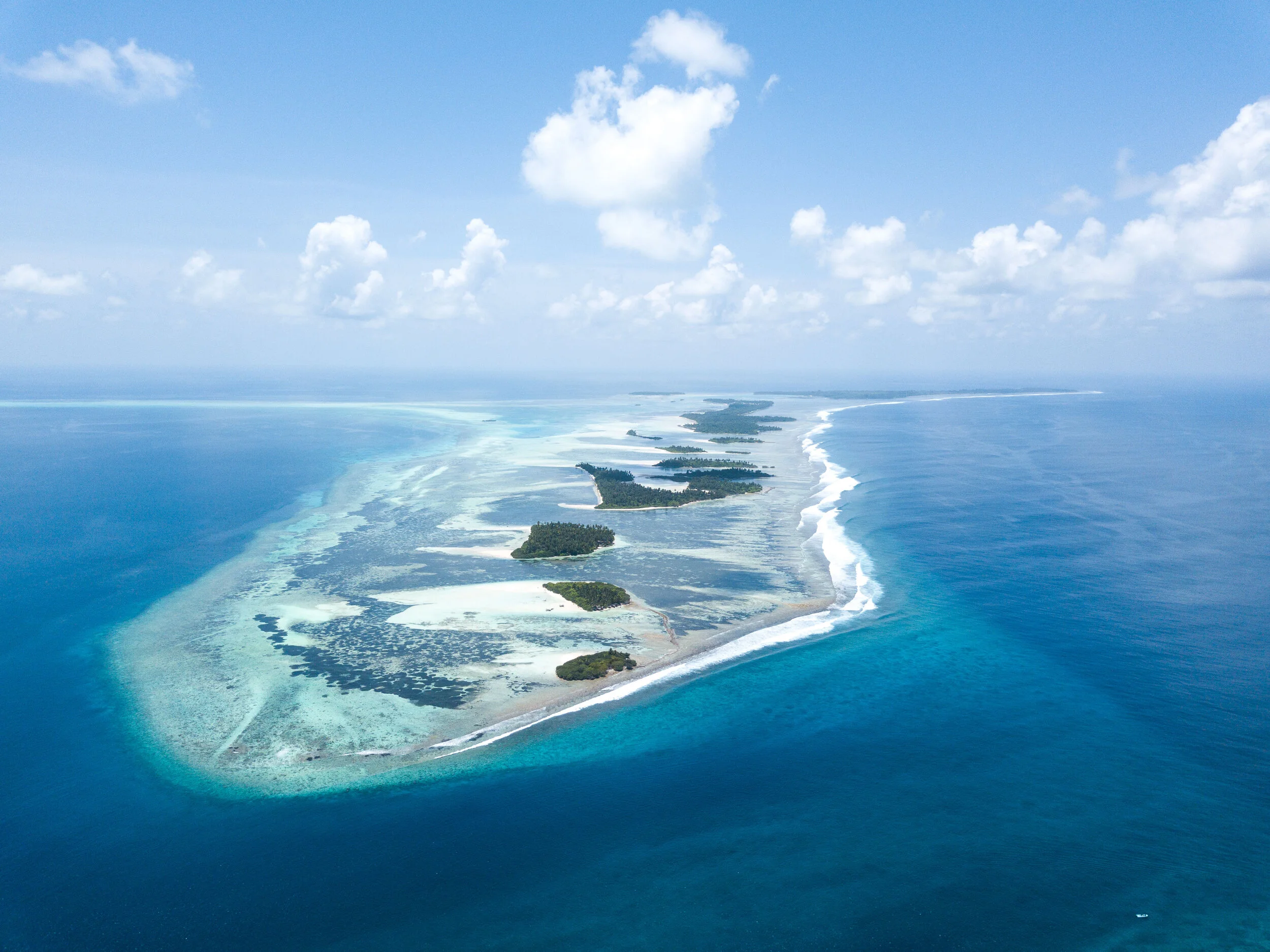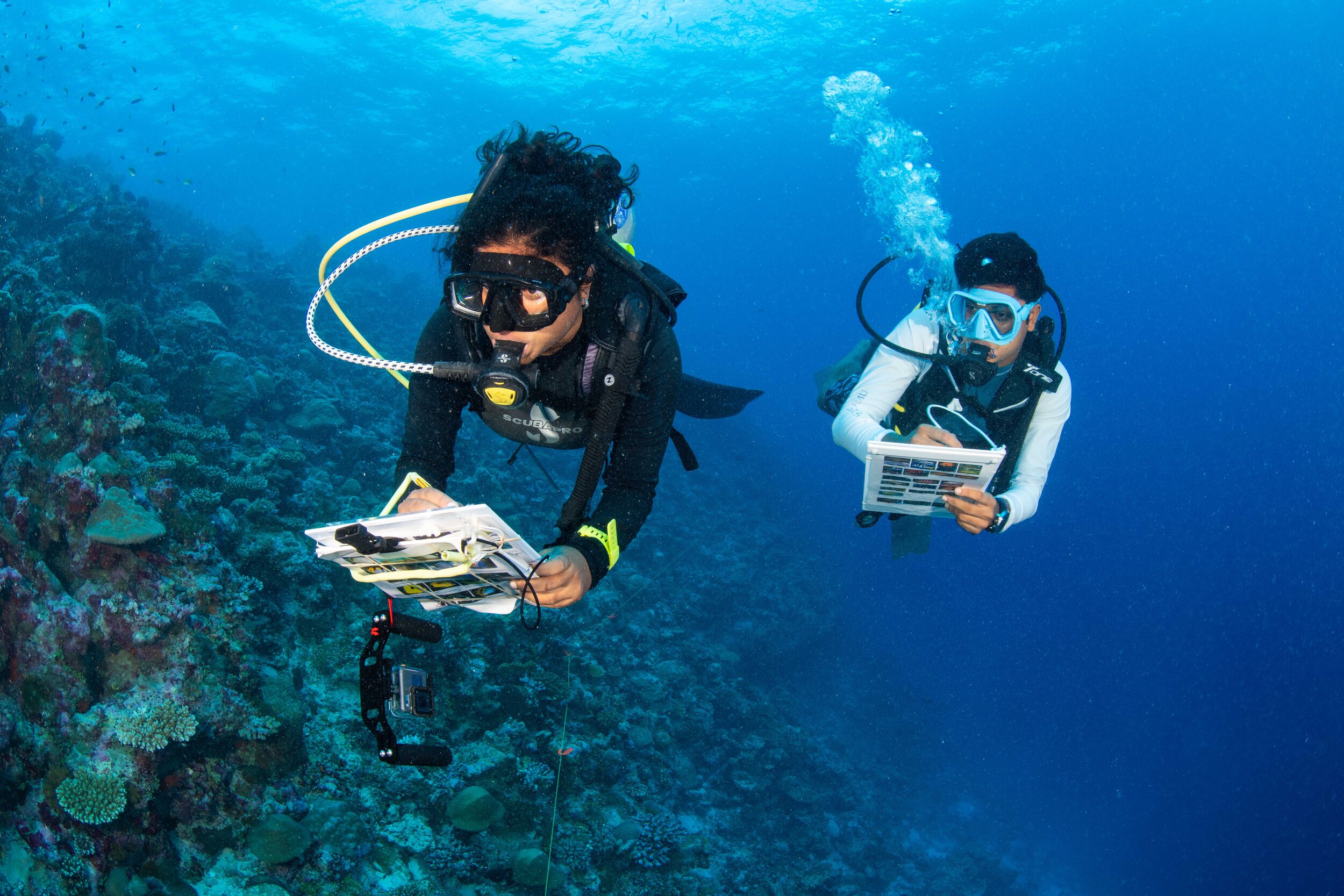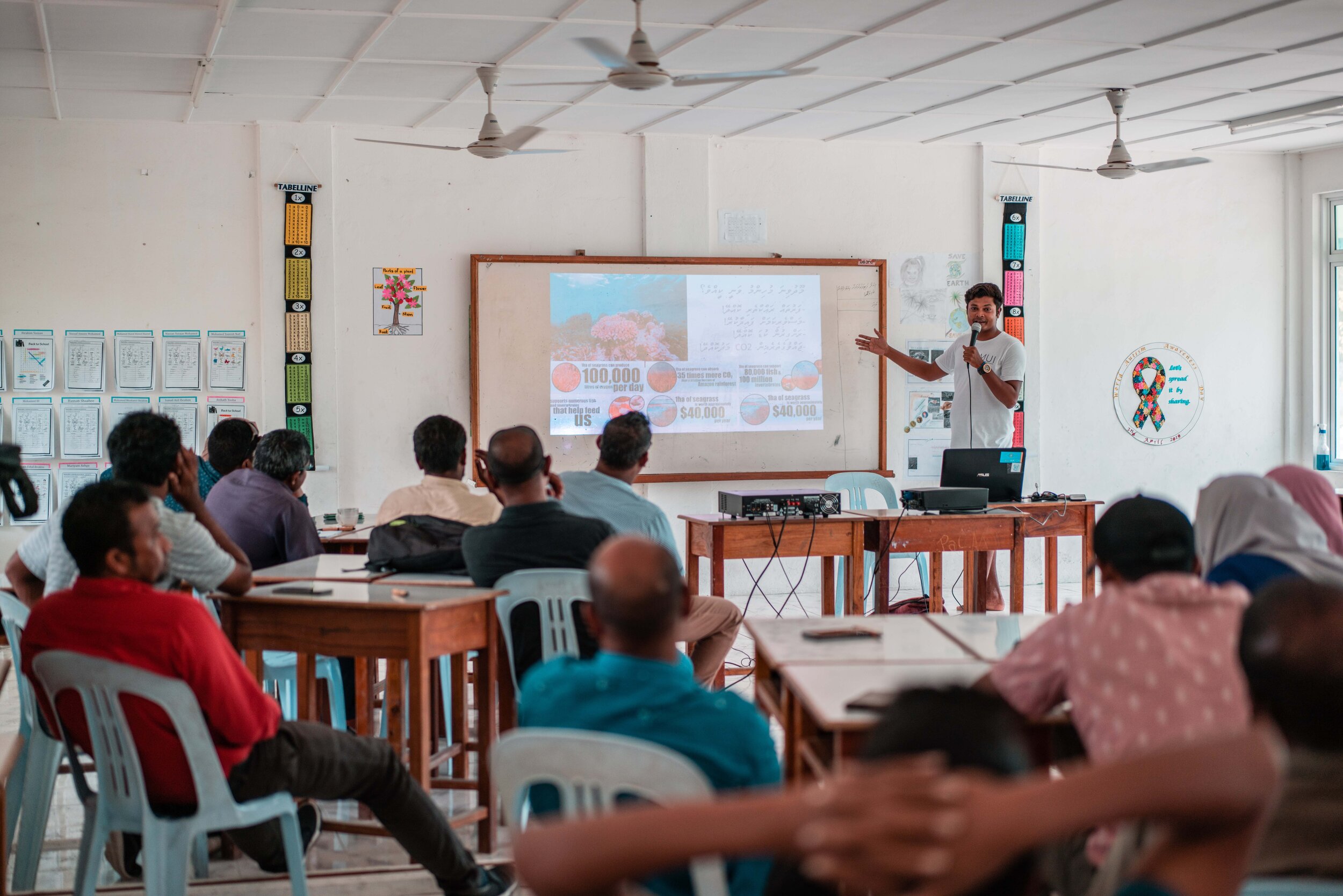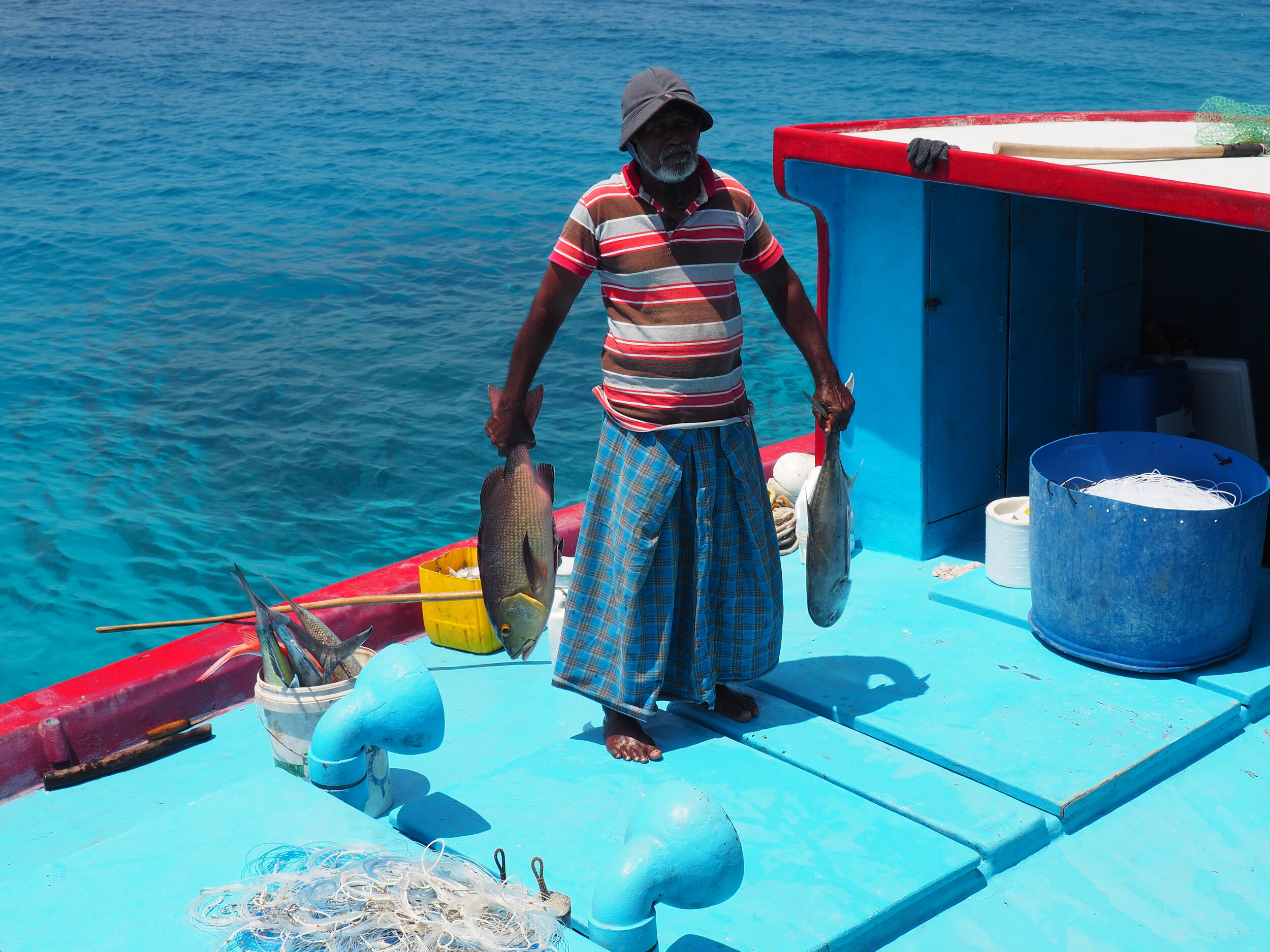
A NETWORK OF LOCALLY-MANAGED
MARINE PROTECTED AREAS IN LAAMU
The Maldives owes its existence to coral reefs. These reefs are the foundation of the country, yet less than 1% of them are protected.
OUR
THREATENED HOME
The coral reefs of the Maldives are truly remarkable. As the seventh largest coral reef system in the world and the largest in the Indian Ocean, they host over a quarter of the world’s known hard coral species and nearly a fifth of all coral reef fish. Not only do these coral reefs support a magnificent array of marine life such as sharks, rays, and turtles, but they also serve as the foundation for every island. Acting as natural barriers, they shield the low-lying islands from the erosive forces of the sea while providing food and livelihoods for Maldivians for millennia. Moreover, they underpin the environmental backdrop of the country’s most lucrative industry—tourism.
However, the coral reefs of the Maldives face significant threats from climate change and overexploitation due to coastal development, overfishing, unsustainable tourism practices, and pollution. As these ecosystems degrade, their ability to sustain the communities that rely on them diminishes. Environmental protection is vital for the Maldives’ future, yet currently, less than one percent of its ocean is protected.
Marine Protected Areas (MPAs) are essential for conserving biodiversity and ensuring effective fisheries management. Scientific studies suggest that at least 30% of the ocean should be protected to achieve significant ecological benefits, especially when coupled with sound management practices in surrounding areas. While MPAs may not fully counteract global threats like climate change, they enhance the resilience of coral reefs by supporting biodiversity.
As Laamu Atoll and the rest of the Maldives navigate an inevitably changing environment, it is crucial to sustain the livelihoods of local people and the tourism sector. Laamu Atoll stands out as a prime location to develop and showcase well-managed protected and conserved areas due to its abundance of ecologically significant sites.
OUR SOLUTION
LAAMU’S FIRST MARINE PROTECTED AREAS
Since 2016, The Blue Marine Foundation, and its local partner, Maldives Resilient Reefs (MRR), have worked alongside the Laamu Atoll Council and local communities to identify marine areas in need of conservation. This participatory approach led to the identification of grouper spawning aggregation sites in 2017 and the completion of biodiversity baseline surveys of coral reefs, seagrass meadows, and mangroves in 2019. These findings were compiled with research conducted by MUI and other partner NGOs to support a formal proposal to the Government of the Maldives, to facilitate the protection of Laamu Atoll’s most ecologically significant areas. Thanks to these efforts, in 2021, Laamu Atoll was designated a Hope Spot by Mission Blue and six Protected Areas (PA) were formally designated by the Government of Maldives.
The management planning processes for these PAs are coordinated by the Maldives Ministry of Tourism and Environment. MRR and Blue Marine, along with MUI, are actively supporting this process by providing vital information regarding marine habitats, vulnerable species, and resource use while engaging local communities in the monitoring of these essential marine areas through the ‘Laamaseelu Farudhun’ citizen science programme.
Since 2023, MRR and Blue Marine have been working closely with the Laamu Hithadhoo Island Council to establish a Community Conserved Area (CCA) within the council's jurisdictional boundary. Known as the “L. Hithadhoo Baaneykolhu CCA”, this area supports healthy coral reefs and seagrass habitats while harboring a rich diversity of marine life, including manta rays, green turtles, and various fish and endangered species. Moreover, it serves as a critical multi-species grouper spawning aggregation site. The goals of the CCA are to protect its biodiversity and ecosystems, deliver sustainable use of natural resources and create a better understanding of the Maldives marine environment through education and outreach. The Hithadhoo Kandu Kolhu area will be a No-take zone, completely removing fishing pressure and enabling fish stocks to replenish. The increase in fish numbers will also be aided by the use of sustainable fishing methods in the rest of the CCA. A comprehensive CCA Management Plan and regulatory framework have been developed following extensive stakeholder engagement and are currently awaiting approval from the Government of the Maldives for its implementation.
MRR and Blue Marine have been actively monitoring changes to coral reef areas in Laamu Atoll since conducting baseline surveys in 2019. Our findings reveal encouraging trends in coral health, showing an increase in average hard coral cover from 16.92% in 2019 to 25.02% in 2021/22, and further to 29.56% in 2024. However, the 2024 bleaching event had a significant impact on Laamu's coral ecosystems, with 38.36% of hard coral cover observed to be bleached. Analysis indicated that bleaching was most pronounced at shallower depths, and corals of the genus Acropora were more susceptible to bleaching compared to those from the genera Pocillopora and Porites.





